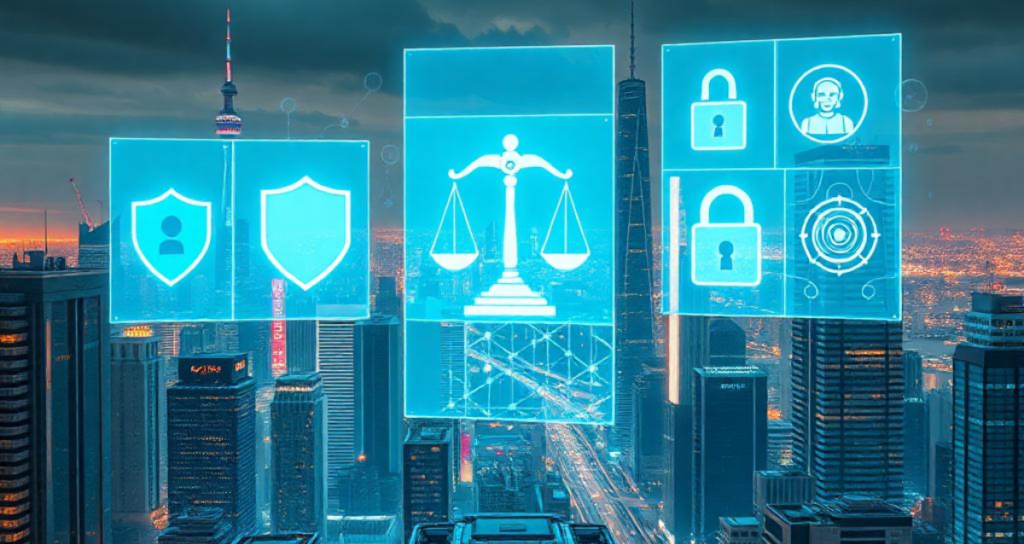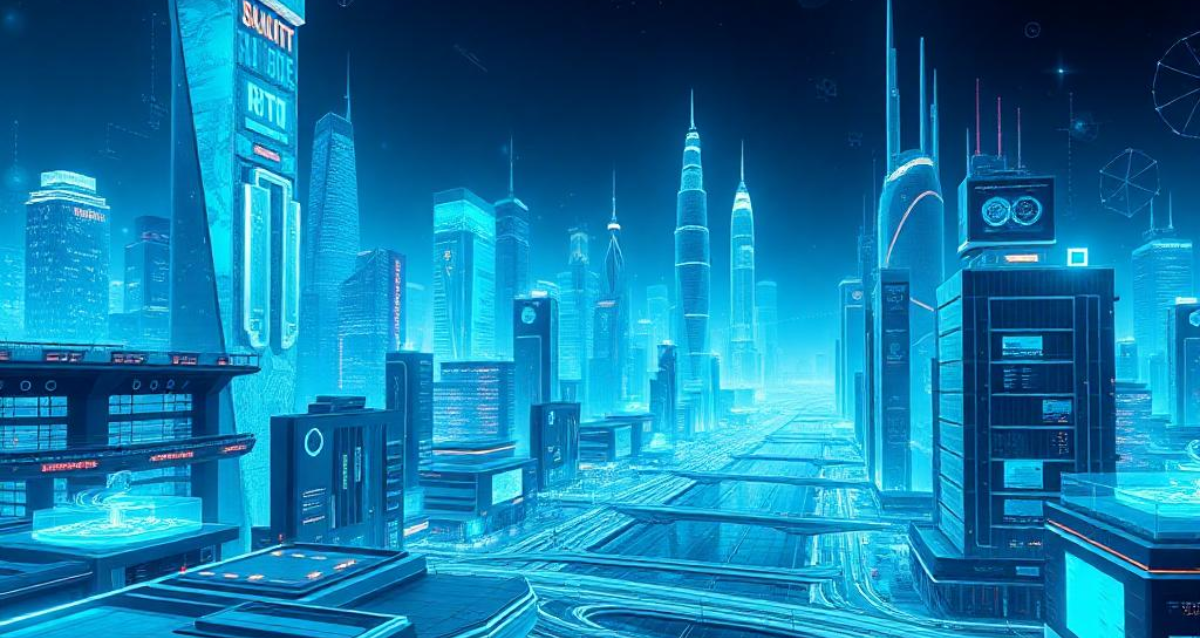Some terms may seem mysterious at first glance, but they often ignite conversations about technological innovation. TBA316389902634, a unique identifier, embodies progress and the transformative power of reshaping industries. It serves as a conceptual framework for futuristic technologies and cutting-edge systems, pushing the boundaries of what is possible. By understanding its purpose, we gain insights into how innovation enhances industries, improves lifestyles, and addresses complex challenges.
At first sight, TBA316389902634 might appear as a random sequence, but it represents a foundation for emerging technologies. Think of it as a “skeleton key” unlocking innovations in artificial intelligence, biotechnology, and quantum computing. This term symbolizes the journey of placeholders evolving into impactful, real-world applications, driving societal progress and creating a path for future advancements.
Table of Contents
The History and Evolution of TBA316389902634
TBA316389902634 has its roots in problem-solving. Emerging in the early 2000s, it was designed to address inefficiencies in specific industries. With technology advancing rapidly, this concept adapted and grew into a versatile framework that professionals from diverse fields could use to innovate.
Key Milestones:
- 2000s: Development begins as a niche solution.
- 2010s: Global collaboration enriches its scope.
- 2020s: Becomes a foundation for AI, blockchain, and IoT applications.
Today, TBA316389902634 symbolizes adaptability, progress, and the collective effort of innovators worldwide.
A Brief Overview of TBA316389902634
TBA316389902634, while seemingly a random string of numbers, can be interpreted as a symbolic representation of emerging technologies’ dynamic and ever-evolving landscape. This “TBA” (To Be Announced) signifies the unpredictable nature of technological advancements, constantly pushing the boundaries of human innovation.
These emerging technologies are not isolated entities but interconnected and interdependent, forming a complex ecosystem. The following are some of the key players within this ecosystem:
- Artificial Intelligence (AI) and Machine Learning (ML):
- Definition: AI refers to the simulation of human intelligence in machines, enabling them to perform tasks that typically require human intelligence, such as learning, problem-solving, and decision-making. Machine learning is a subset of AI that focuses on algorithms that allow computers to learn from data and improve their performance on specific tasks without being explicitly programmed.
- Applications: AI and ML are being used in various fields, including healthcare (e.g., disease diagnosis, drug discovery), finance (e.g., fraud detection, algorithmic trading), and transportation (e.g., self-driving cars, traffic optimization).
- Case Study: A notable example is Google’s AlphaGo, an AI program that defeated a world-champion Go player in 2016. This landmark achievement demonstrated the potential of AI in complex strategic games and highlighted the rapid advancements in deep learning algorithms.
- Blockchain Technology:
- Definition: Blockchain is a decentralized, distributed ledger technology that records transactions across multiple computers in a network. It is known for its security, transparency, and immutability, making it suitable for various applications.
- Applications: Blockchain is being used in finance (e.g., cryptocurrencies, smart contracts), supply chain management (e.g., tracking the origin and authenticity of products), and voting systems (e.g., ensuring secure and transparent elections).
- Case Study: Bitcoin, the first cryptocurrency, is a prominent example of blockchain technology in action. It has revolutionized the financial landscape by enabling peer-to-peer transactions without the need for intermediaries like banks.
- Quantum Computing:
- Definition: Quantum computing leverages the principles of quantum mechanics, such as superposition and entanglement, to perform calculations that are beyond the capabilities of classical computers.
- Applications: Quantum computing has the potential to revolutionize fields like drug discovery, materials science, and cryptography.
- Case Study: Researchers at Google recently claimed to have achieved “quantum supremacy” with their Sycamore processor, demonstrating its ability to perform a specific calculation that would be practically impossible for the most powerful classical supercomputers.
- Augmented Reality (AR) and Virtual Reality (VR):
- Definition: AR overlays digital information onto the real world, while VR creates immersive simulated environments.
- Applications: AR and VR are being used in gaming, entertainment, education, training, and healthcare.
- Case Study: Pokémon Go, a popular mobile game, brought AR to the mainstream by allowing players to capture virtual creatures in real-world locations. This game demonstrated the potential of AR to blend the digital and physical worlds in engaging ways.
The Interconnectedness of Emerging Technologies of TBA316389902634

These technologies are not isolated entities but rather interconnected and interdependent. For example, AI can be used to analyze and optimize blockchain networks, while quantum computing can enhance the capabilities of AI algorithms. Similarly, AR and VR can be integrated with AI and ML to create more immersive and interactive experiences.
TBA316389902634: An Icon of the Unknown
The string “TBA316389902634” serves as a reminder of the unpredictable nature of technological advancement. While we can identify key players and anticipate potential breakthroughs, the true extent and impact of these technologies remain to be seen.
This “TBA” signifies the unknown, the yet-to-be-discovered innovations that will shape the future. It represents the exciting and often unpredictable journey of human ingenuity, where new technologies constantly emerge, challenge our understanding of the world, and redefine the boundaries of what is possible.
This response emphasizes the interconnectedness of emerging technologies, highlights the dynamic and ever-evolving nature of this field, and utilizes the “TBA316389902634” placeholder to symbolize the unknown and the potential for future breakthroughs.
Fundamental Elements of TBA316389902634
The structure of TBA316389902634 is like the DNA of technology. Here are its core elements:
- Data: The fuel driving algorithms and insights.
- Algorithms: Complex instructions enabling problem-solving.
- Hardware: Tools like GPUs and TPUs enhance computational power.
- Collaboration: The human element, which refines and scales technology.
Each part is crucial, like the gears of a well-oiled machine, to maximize efficiency and outcomes.
Advantages of TBA316389902634
What sets TBA316389902634 apart? Let’s explore its unparalleled benefits:
- Efficiency: Streamlines operations with precision.
- Versatility: Applicable to a wide range of industries.
- Cost-Effectiveness: Saves resources by optimizing processes.
- User-Friendliness: Simplifies integration and minimizes training.
- Community Support: Encourages shared knowledge and innovation.
These advantages make TBA316389902634 a tool not just for technologists but for everyone looking to innovate.
Applications Across Industries
The adaptability of TBA316389902634 makes it a game-changer in numerous sectors:
1. Healthcare:
- Precision Medicine: AI and ML algorithms can analyze vast amounts of patient data to identify personalized treatment plans, predict disease risks, and accelerate drug discovery.
- Diagnostics: AR and VR can be used to assist surgeons during complex procedures, provide remote medical consultations, and enhance patient education and rehabilitation.
2. Smart Cities:
- Urban Planning: IoT sensors and AI-powered analytics can optimize traffic flow, manage energy consumption, and improve public safety in smart cities.
- Infrastructure: Blockchain technology can be used to ensure transparency and efficiency in public procurement and infrastructure management.
3. Education:
- Personalized Learning: AI-powered platforms can adapt to individual learning styles and paces, providing personalized learning experiences for students.
- Virtual and Augmented Learning: VR and AR can create immersive learning environments, making education more engaging and interactive.
4. Environmental Sustainability:
- Renewable Energy: AI and ML can optimize the operation of renewable energy systems, such as wind farms and solar power plants, maximizing energy output and efficiency.
- Environmental Monitoring: IoT sensors and drones can be used to monitor environmental conditions, track pollution levels, and identify areas for conservation.
Its impact extends far beyond these examples, continuously evolving to meet industry demands.
Emerging Technologies Shaping the Future
This section explores several key emerging technologies that are poised to significantly impact our world:
Quantum Computing: A New Horizon
Applying the ideas of quantum physics, quantum computing can do intricate calculations at previously unheard-of rates.
Implications of Quantum Computing:
- Drug Discovery: Quantum computers can simulate molecular interactions with unprecedented accuracy, accelerating the discovery of new drugs and treatments.
- Materials Science: Quantum computing can help design new materials with superior properties, such as increased strength, conductivity, and efficiency.
- Cryptography: Quantum computing poses a threat to existing encryption methods, but it also offers the potential for new, more secure cryptographic algorithms.
Challenges of Quantum Computing:
- Quantum decoherence: Quantum states are fragile and can be easily disrupted by environmental noise, making it difficult to maintain quantum coherence.
- Scalability: Building large-scale, fault-tolerant quantum computers remains a significant engineering challenge.
- Applications: Identifying practical applications for quantum computing that provide a clear advantage over classical computers is an ongoing area of research.
Renewable Energy Technologies
Renewable energy technology like solar panels, wind turbines, and sophisticated batteries are becoming more popular as the globe looks for sustainable alternatives.
Implications of Renewable Energy:
- Environmental Sustainability: Renewable energy sources, such as solar, wind, and hydropower, reduce greenhouse gas emissions and mitigate climate change.
- Energy Security: Renewable energy sources can enhance energy security by reducing dependence on fossil fuels.
- Economic Development: The renewable energy sector is creating new jobs and driving economic growth.
Challenges of Renewable Energy:
- Intermittency: Renewable energy sources, such as solar and wind power, are intermittent, requiring energy storage solutions to ensure a reliable supply of electricity.
- Cost: While the cost of renewable energy technologies has decreased significantly, they can still be more expensive than traditional fossil fuel sources.
- Infrastructure: Integrating large amounts of renewable energy into the existing grid requires significant infrastructure upgrades.
Internet of Things (IoT)
By connecting commonplace objects to the Internet, the Internet of Things facilitates smooth automation and communication.
Implications of IoT:
- Smart Homes: IoT devices can automate various tasks in the home, such as controlling lighting, temperature, and security systems.
- Smart Cities: IoT sensors and devices can be used to optimize traffic flow, manage energy consumption, and improve public safety in smart cities.
- Industrial IoT: IoT can be used to improve the efficiency and productivity of industrial processes, such as manufacturing and logistics.
Challenges of IoT:
- Security: IoT devices are often vulnerable to cyberattacks, raising concerns about data security and privacy.
- Interoperability: The lack of interoperability standards can make it difficult to connect and integrate different IoT devices.
- Scalability: The massive number of IoT devices can strain network capacity and processing power.
Biotechnologies: TBA316389902634
Biotechnologies solve problems in agriculture, healthcare, and environmental preservation by fusing biology and technology.
Implications of Biotechnologies:
- Healthcare: Biotechnologies are revolutionizing healthcare by enabling the development of new drugs, therapies, and diagnostic tools.
- Agriculture: Biotechnologies can improve crop yields, enhance food quality, and develop pest-resistant crops.
- Environmental Remediation: Biotechnologies can be used to clean up pollution, remediate contaminated sites, and develop sustainable biofuels.
Challenges of Biotechnologies:
- Ethical Concerns: The use of genetic engineering and other biotechnologies raises ethical concerns about the potential for unintended consequences and the equitable distribution of benefits.
- Regulation: The rapid pace of technological advancement in biotechnology requires a robust regulatory framework to ensure safety and ethical use.
- Public Perception: Public perception of biotechnology can be influenced by concerns about safety, environmental impact, and ethical considerations.
The Ethical Dimension of Technological Advancements of TBA316389902634

As these technologies continue to evolve, it is crucial to consider the ethical implications of their development and deployment:
- Privacy: The collection and use of personal data raise concerns about privacy and data security.
- Bias: AI systems can inherit biases from the data they are trained on, leading to unfair or discriminatory outcomes.
- Job Displacement: Automation and AI may lead to job displacement in certain sectors.
- Autonomy: The increasing autonomy of AI systems raises questions about accountability and control.
These challenges require a blend of technology and human wisdom to address effectively.
The Future of TBA316389902634: A Journey of Continuous Evolution
While “TBA316389902634” itself remains a placeholder, the underlying concept it symbolizes as the foundation of emerging technologies is dynamic and ever-evolving. As industries adapt to new challenges and opportunities, this framework will continue to expand and refine, paving the way for groundbreaking solutions in unforeseen areas.
Key Drivers of Future Evolution:
- Exponential Growth: Moore’s Law, which describes the exponential growth of computing power, continues to hold. This rapid advancement in processing power will fuel the development of even more sophisticated AI algorithms, enabling breakthroughs in areas like drug discovery, materials science, and climate modeling.
- Interdisciplinary Collaboration: The future of TBA316389902634 lies in interdisciplinary collaboration. Researchers, engineers, and scientists from diverse fields will need to work together to develop and integrate these technologies effectively. For example, collaborations between biologists, computer scientists, and engineers are crucial for the development of advanced medical technologies like gene editing and personalized medicine.
- Ethical Considerations: As these technologies become more powerful, ethical considerations will become increasingly important. Issues such as data privacy, algorithmic bias, and the responsible use of AI will need to be addressed proactively to ensure that these technologies are developed and deployed responsibly and equitably.
- Unforeseen Breakthroughs: The history of technology is replete with unexpected breakthroughs. The invention of the transistor, for example, led to the development of the modern computer, a technology that was unimaginable at the time. Similarly, future breakthroughs in areas like quantum computing, nanotechnology, and biotechnology could lead to unforeseen applications and revolutionize our understanding of the world.
Case Study: The Rise of Synthetic Biology
Synthetic biology, a field that involves designing and engineering biological systems, exemplifies the dynamic and unpredictable nature of emerging technologies. Initially focused on modifying existing organisms, synthetic biology is now expanding into areas such as creating artificial life forms and developing novel biomaterials.
- Early Stages: Early research in synthetic biology focused on modifying existing organisms, such as bacteria, to produce valuable compounds like insulin and antibiotics.
- Current Trends: Current research is exploring more ambitious goals, such as creating artificial cells and developing novel biomaterials with unique properties.
- Future Potential: Synthetic biology has the potential to revolutionize fields like medicine, agriculture, and environmental sustainability. For example, it could be used to develop new drugs to treat diseases, create more efficient and sustainable crops, and clean up environmental pollution.
Conclusion
TBA316389902634 is more than just a term; it symbolizes the boundless potential of emerging technologies that are transforming industries and reshaping our world. From healthcare to education, its applications hold the promise of improving lives and solving complex challenges. As a dynamic placeholder, it highlights the ever-evolving landscape of innovation and progress. By embracing this technology responsibly, fostering collaboration, and addressing ethical concerns, we can unlock new opportunities for a sustainable and brighter future. Through interdisciplinary efforts, TBA316389902634 becomes a beacon of progress, paving the way for profound advancements that benefit humanity.
FAQs
1. What is TBA316389902634?
TBA316389902634 is a placeholder term symbolizing advancements in emerging technologies like AI, blockchain, and quantum computing.
2. How does TBA316389902634 impact industries?
It enhances efficiency, reduces costs, and drives innovation across sectors, including healthcare, smart cities, and education.
3. What is the future of TBA316389902634?
With continuous innovation and global collaboration, TBA316389902634 will likely transform industries further and address emerging global challenges.

